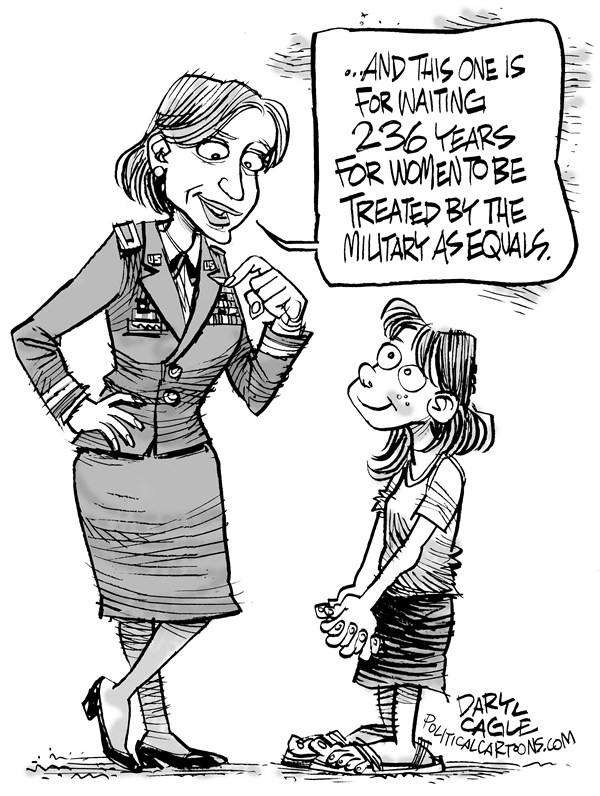 Despite numerous calls to ‘Let Women Fight’, internal reviews of the policy, and growing evidence of women’s contributions to operations in Iraq and Afghanistan, the January 2013 announcement that the combat exclusion would be removed was not entirely expected. For years leading up to the announcement, Congress and the Department of Defense had justified the exclusion as essential to national security. Moreover, less than 12 months before the decision to remove the exclusion, then–Pentagon press secretary George Little announced that although 14,000 new combat related jobs would be opened to women, infantry and direct combat roles would remain off limits.
Despite numerous calls to ‘Let Women Fight’, internal reviews of the policy, and growing evidence of women’s contributions to operations in Iraq and Afghanistan, the January 2013 announcement that the combat exclusion would be removed was not entirely expected. For years leading up to the announcement, Congress and the Department of Defense had justified the exclusion as essential to national security. Moreover, less than 12 months before the decision to remove the exclusion, then–Pentagon press secretary George Little announced that although 14,000 new combat related jobs would be opened to women, infantry and direct combat roles would remain off limits.
- So what did the ‘policy change’ mean and why was it initiated?
Rather than speculate on the rationale and motivations behind the policy about-face, it is more important to understand that by the time it was announced that the combat exclusion would be removed, it no longer existed.
In fact, the announcement to ‘let women fight’ should be seen as a PR stunt rather than a policy change. Here’s why…
There are three ways that the wars in Iraq and Afghanistan extinguished any remaining relevance or application of the policy, eroding the rule into a catch phrase rather than an enforceable policy: first, several policy changes during the Iraq and Afghanistan wars whittled away the foundation of the combat exclusion policy; second, due to the nature of modern warfare, the combat exclusion was not only out-dated and unenforceable, but also detrimental to national security; third, the female-only Lioness and Female Engagement Team demonstrate that the military in fact was assigning women specifically to combat operations at the same time as they claimed to be enforcing a combat exclusion. While women fought and died in combat in Iraq and Afghanistan, the combat exclusion survived ‘on paper’ and as an idea. Specifically, although the policy did not keep women from battle, it perpetuated the idea that women were not on the frontlines and acted as a formal obstacle for women seeking to apply for particular jobs or further their military careers in particular ways.
So the real question is, what purpose did this PR stunt serve, and has it been achieved? I think there were two central purposes, but I’d be interested in hearing your thoughts:
a) the policy change announcement it signaled a “new” progressive era for women in the force, showing solidarity with women in the face of a growing sexual violence crisis and; b) it rewrote women out of the history of Iraq and Afghanistan by perpetuating the misconception that women had not participated in combat leading up to the policy change.
Megan MacKenzie is a Senior Lecturer in the Department of Government and International Relations at the University of Sydney in Australia. Her main research interests include feminist international relations, gender and the military, the combat exclusion for women, the aftermaths of war and post-conflict resolution, and transitional justice. Her book Beyond the Band of Brothers: the US Military and the Myth that Women Can't Fight comes out with Cambridge University Press in July 2015.
https://www.cambridge.org/ee/academic/subjects/politics-international-relations/international-relations-and-international-organisations/beyond-band-brothers-us-military-and-myth-women-cant-fight?format=PB

0 Comments